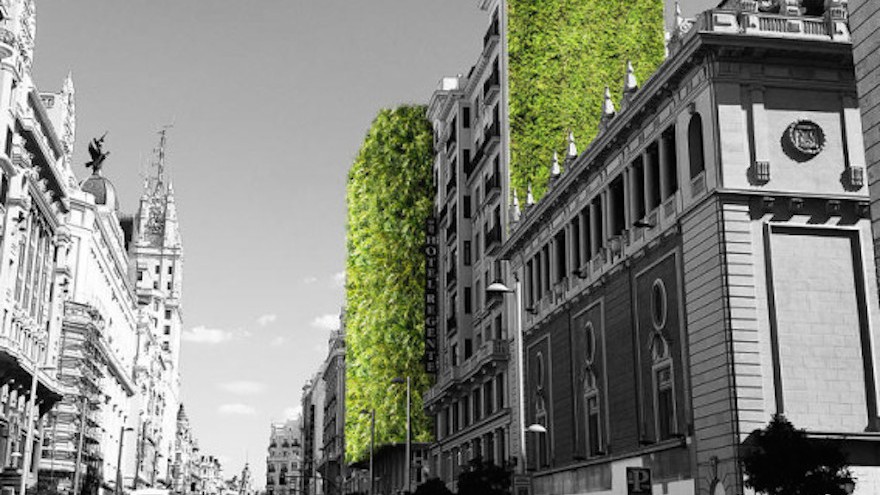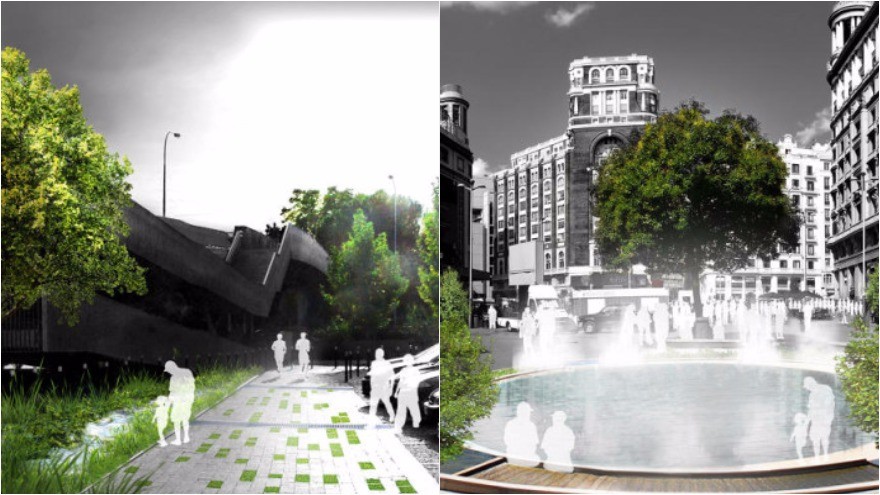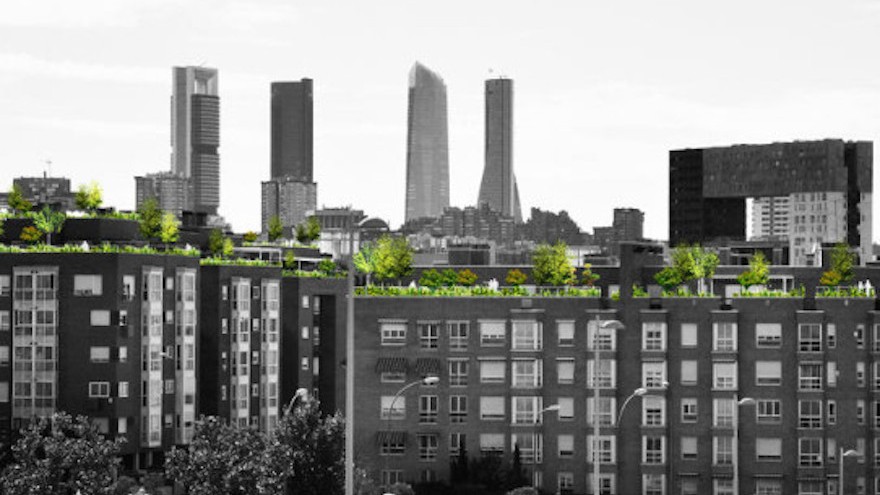In response to the COP21 climate conference in 2015, Paris recently passed a law stating that all new buildings in commercial areas must be at least partially covered with solar panels or plants. Now, Madrid is jumping on the bandwagon with plans to implement the greening of its city centre, in preparation for global warming’s mounting impact on the local climate.
In collaboration with the city, sustainable design and engineering firm Arup has released its plan to create nature-based solutions to urban pollution and extreme weather conditions. The project, called Madrid + Natural aims to increase biodiversity in the city by introducing more plant life to the built environment.
It aims to do this by standardising green urban infrastructure in the form of green walls and roofs, and urban farming, which will improve air quality, increase the efficiency of solar panels, create diverse ecosystems and activate a cooling effect that can neutralise rising temperatures.
“Temperature reductions up to 4.5 degrees Celsius over the summer were reported in areas of Madrid where these strategies have been implemented,” says Arup’s Susana Saiz.
In order for Madrid + Natural to work, Arup is envisioning a green takeover of the city where natural environments are incorporated into new constructions as well as existing buildings and infrastructure like empty urban lots, abandoned spaces, transport links and bridges. The company also plans to consult with neighbourhood communities on low maintenance greening techniques.
Tom Armour, Arup’s Landscape Architecture group leader says that in addition to their positive environmental impact, green networks in a city can also “have positive effects on the economic and social cohesion of neighbourhoods”.









